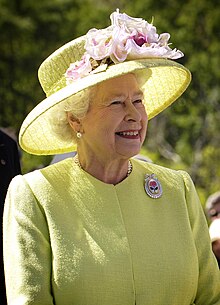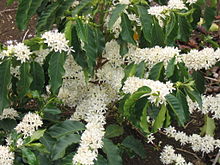Queen Elizabeth Park (New Zealand)
| Queen Elizabeth Park | |
|---|---|
| location | Kapiti Coast , New Zealand |
| size | 650 hectares |
| opening | 1953 |
| operator | Wellington Region District Council |
| opening hours | daily from 8:00 a.m. to sunset |
Coordinates: 40 ° 57 ′ 41 ″ S , 174 ° 58 ′ 47 ″ E
The Queen Elizabeth Park is the last area with natural dunes on the Kapiti Coast in Kapiti Coast District on the North Island of New Zealand. The swath of dunes stretches from Paekakariki to Foxton and is a reminder of what the coastal landscape must have looked like before human settlement.
The Greater Wellington District Council, the operator of the park, works together with the neighboring communities to preserve the nature in the park and thus also the recreational opportunities that this landscape offers its residents and visitors.
With its 650 hectares of land fringed by a sandy beach, Queen Elizabeth Park has plenty of space for swimming, fishing, hiking, biking, horse riding and picnics.
The park also impresses with its history of 20,000 US marines stationed in World War II and with a tram museum with historic trams and a 2 km long tram route to the beach.
Flora and fauna

Although some parts of Queen Elizabeth Park have changed over time, most of the wetlands and coastal and inland dunes have remained intact.
On the dunes near the coast, which are getting closer and closer to the sea, there are grasses such as the spinifex , pingao and fence winds , on the dunes further back, which hardly move, then Muehlenbeckia , taupata trees , harakeke (flax) and ferns . Small scraps of bush lie between and behind the dunes. Māhoe , Kawakawa and Kaikomako provide habitat and food for insects and birds.
These scraps of bush once extended over a large part of the inland dunes, but they are now green. The low hills create a natural barrier between the outlets of the Akatarawa River and the sea. In order to improve the now rare coastal habitats, the operator Greater Wellington is working closely with the surrounding communities to restore the wetlands and remnants of the Kahikatea forests near the Mackays Crossing .
The Queen Elizabeth Park is the habitat of diverse bird species and offers a wide range of food sources. Karoro ( seagulls ), kawau ( crows ) and torea ( oystercatchers ) find food along the coastline and nest in the adjacent dunes. The Tui like to feed on flax, while the wetlands home to Putangitangi (Paradies Shelducks ), plovers and Pukeko ( Purpurhuhn are). Sometimes you can also see piwakawaka ( gray fan tail ), tauhou ( silver eye ) and kererus in the bushes.
Park management
The park's management plans are in the form of agreements between Greater Wellington and the municipalities that set out how regional parks are generally managed. A management plan for Queen Elisabeth Park was established under the Local Government Act of 1974 and the Reserves Act 1977.
In 2003, Greater Wellington approved a national plan to create a network to centrally manage all regional parks.
The Queen Elizabeth Park Management Plan was finally approved in June 2006. It contains detailed guidelines for managing the park in accordance with the requirements set out in the Network Plan and in accordance with the provisions of the Reserves Act 1977.
history

The proximity to the coast, the flora and fauna and not least the central location of today's Queen Elizabeth Park have always been reasons for the attractiveness of the park for the people of this region. The Māori had lived here for hundreds of years, and the large settlements of Wainui and Whareroa existed until the mid-1800s. Although the country was heavily forested, the numerous waterways were deep enough to get from Paekakariki to Waikanae by canoe .
After the government bought land in the mid-1800s, local Māori gradually left the area and European settlers began to farm the land. The land was cleared, the wetlands between the sand dunes drained and pastures sown. From the 1840s the beach formed part of the main road to the north, which led many travelers to stay overnight in Whareroa when passing through.
The traffic routes were continuously improved and in 1886 the construction of the railway line between Wellington and Foxton was completed. At the turn of the 20th century, the Strand Highway was still the only access for the towns of Raumati and Paraparaumu .

During the Second World War, the sandy beach of Queen Elisabeth Park and the rural surroundings near Wellington were an ideal training area for the US troops who were preparing there for fighting in the Pacific. The Camp Russell was built near the park entrance Mackays Crossing, the Camp Paekakariki was at today's southern entrance and the Camp MacKay above the modern State Highway 1 at Whareroa farm. In the period from June 1942 to November 1943, a total of 20,000 Marines were housed in these camps.
Shortly after the war, these camps were closed and the first large park in the region was established. Named after Queen Elizabeth II , Queen Elizabeth Park was inaugurated on the royal visit shortly before her coronation in 1953 and has been run by a park administration ever since. Many of the recreational facilities were set up in the 1950s-60s. Park management was transferred to Greater Wellington in 1990, and the first park ranger began work in 1994.
To this day, Queen Elizabeth Park is a great place to relax and enjoy nature in the warm climate of the Kapiti Coast.
leisure offers
horse riding

Queen Elizabeth Park is an ideal place for horse riding, with easy trails across fields and direct access to the beach. Access points to the beach are Paekakariki, Whareroa and Raumati South. A permit from the Kapiti Coast District Council is required to ride on the beach. Hikers have priority on the trails.
Riders are not allowed to ride on the dune trails, not at the barbecue areas and not directly along the beach.
Mountain biking

The park has 2 mountain bike tours that are very popular with both sporty and recreational cyclists.
Whareroa Stream Loop
- Length: 4 km
- Duration: 40 minutes
The signposted tour starts at Whareroa Beach, first runs on the dune paths, then along the creek to Mackays Crossing and back over the sealed Whareroa Road to the beach. She passes the farm, horse pastures and wetlands as well as the Tramway Museum and the plaque of the US Marines of the Second World War.

Paekakariki - Raumati South Loop
- Length: 9 km
- Duration: 1–2 hours
The long loop runs in the north along the coastal paths of Paekakariki through the dunes past historical sites and with great views of Kapiti Island. Return via Raumati South on the dune paths with larger inclines and descents, vegetation at a higher altitude and a view to the east of farmland, wetlands and the Akatarawa foothills.
Swimming, surfing and fishing
The sea along the coast of Queen Elisabeth Park is ideal for almost any type of water sports . Surf fishermen can fish here all year round. Since there are neither fishing regulations nor a fishing license for the coastal region of Greater Wellington , every park visitor of all ages can fish in the sea without restriction.
hike
The natural dunes and wetlands of Queen Elizabeth Park are very popular with hikers, walkers and cross-country skiers of all ages.
The dunes are particularly fragile ecosystems and prone to erosion . Therefore, visitors are advised not to leave the hiking trails.
Except for the agricultural pastures and wetlands, dogs are allowed in the park and can also be taken to the beach.
Tram museum
The Tram Museum is located directly at the Mackays Cross entrance and is open daily between 11:00 am and 4:30 pm ( as of March 2010 ), whereas the trams only run on weekends and only when the weather is nice.
The non-profit company was founded in 1964 with the purpose of maintaining the trams. There is also a working group with the aim of promoting interest in trams in general.
Shortly after the closure of the last tram line in Wellington on May 2, 1964, seven trams were transported from Wellington's Newtown district to Queen Elizabeth Park. After a few weeks in temporary custody, these arrived at the museum in mid-1965.
The first tram ride on the then very short 200-meter route took place for the official opening of the museum on December 19, 1965.
Web links
Individual evidence
- ^ Local Government Act 1974, New Zealand
- ^ Reserves Act 1977
- ^ Parks and forests management plan review . Greater Wellington Regional Council , archived from the original on May 25, 2010 ; accessed on January 19, 2016 (English, original website no longer available).
- ^ Queen Elizabeth Park - Management Plan 2006 . (PDF 2.8 MB) Greater Wellington Regional Council , 2006, archived from the original on February 10, 2013 ; accessed on May 6, 2019 (English, original website no longer available).

